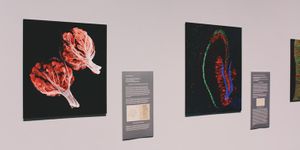Scientists Discover Evidence of Ancient Rainforest in Antarctica
Back in 2017, Dr. Johann Klages and his team were going about their usual business of drilling into the seafloor to extract core samples. They were near the Pine Island glacier of West Antarctica, which, according to The Guardian, is currently 2,000 kilometers from the south pole. When they analyzed the extracted core, they were presented with an incredible look at the surprising history of the region.
Beyond the expected minerals and sediments captured in the core sample, they discovered a 3-meter-long network of fossilized plant roots. As Klages said in the video, the roots appear to have been preserved under the ocean floor since the time of the dinosaurs—about 90 million years ago. He notes that the fossils were well-preserved and consisted of thick and thin roots, similar to the type of network that one would find in a forest today.
From this sample, they surmised that this region of Antarctica, well known for its barren landscape, was once home to a temperate lowland rainforest just 900 kilometers from the south pole.
The team analyzed fossilized pollen and spores from the sample, revealing the types of plants and climate of the region during this time. The Guardian reports that the team found evidence of 65 different kinds of plants dated between 92 million and 83 million years ago. In the video, Klages stated that the plant types revealed, “very warm temperatures for this latitude, with annual mean temperatures similar to those of northern Italy.” He continues that it makes sense that dinosaurs and insects would be able to live in this type of climate, although the four months of polar darkness would make life rather difficult.
The results of this study were published earlier this month in Nature. According to the study, the period that this temperate rainforest existed in—the mid-Cretaceous period—was one of the warmest periods in Earth’s history. Additionally, atmospheric carbon dioxide levels were about 1,000 parts per million, resulting in an ice-free polar world.
Klages and associates believe that understanding the climate and conditions of this ancient temperate rainforest can help the world prepare for climates of the future.
Sources: Nature, Nature (2), The Guardian









